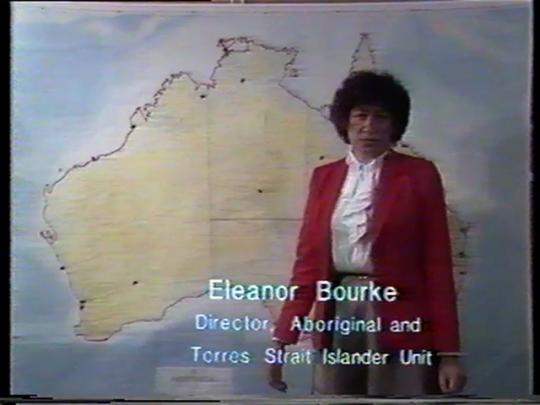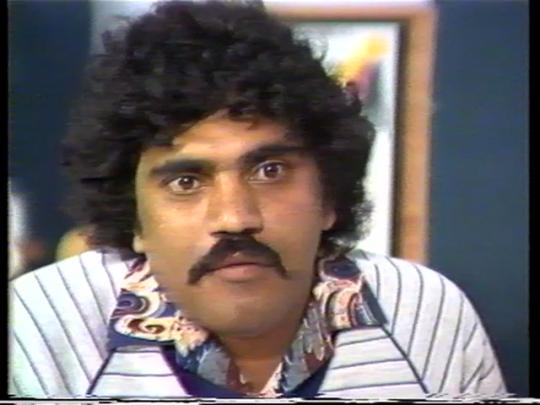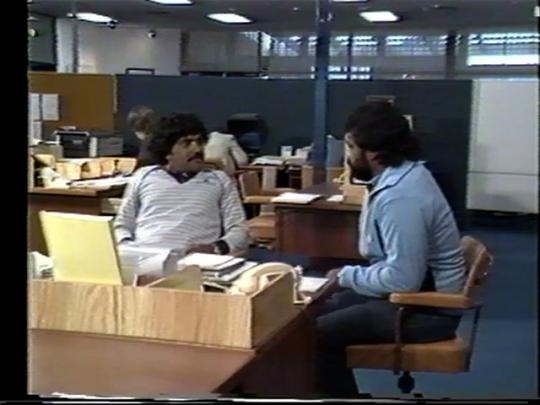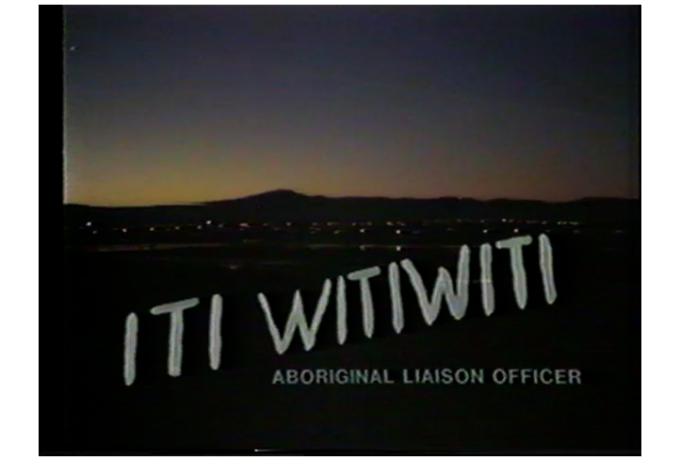
Video shows importance of Aboriginal Liaison Officers in communities
In 1982, DSS made a video about Aboriginal Liaison Officer Andrew Thomas to show his work helping people in regional communities access government services.
With this job, more and more people are coming to know me as ‘the bloke from Social Security’.
| Attachment | Size |
|---|---|
| iti-witiwiti-aboriginal-liaison-officer-plaintext_0.docx | 45.76 KB |
In 1975, the Department of Social Security (DSS) began employing Aboriginal Liaison Officers (ALOs). ALOs developed relationships with Aboriginal communities to help people access government services.
This video from 1981 shows 3 days in the life of ALO Andrew Thomas. He is working in Port Augusta, South Australia. It is titled Iti witiwiti, Thomas’s traditional Pitjantjatjara name.
The version of the video used here is edited to include only people who gave permission.
Thomas’s work in the community
In the excerpt, Wergaia and Wamba Wamba woman Eleanor Bourke, Director of the Aboriginal and Torres Strait Islander Unit, introduces the video.

Andrew Thomas describes his role working in the community. He says he developed community relationships while working as an Aboriginal studies educator at Port Augusta High School. ‘One of my most important jobs is helping traditional people get their social security rights,’ he says.
The full version includes Thomas explaining how important Port Augusta is for Aboriginal people.

The original clip shows Thomas talking to Pitjantjatjara people and Elders, non-Aboriginal colleagues, locals, and Davenport council members. It then shows him visiting people outside their homes, at Wami Kata Old Folks Home, and at an alcohol rehabilitation service.
Issues seen by ALOs
Thomas explains some challenges Aboriginal people faced in accessing government services and how ALOs can help. For example, in this excerpt he explains the cultural protocols involved in interacting with a young woman and her family.
The excerpt also shows Thomas talking to a fellow DSS officer about a customer who wasn’t able to get a payment because of his medical assessment. Thomas explains that the customer and his doctor may not have been able to understand each other. The other officer encourages Thomas to work with an interpreter to help the customer.
In the full version of the video, Thomas sums up his experience as an ALO, calling his work ‘challenging and satisfying’. He thanks fellow ALOs Rita Moriarty and Tim Aguis for their strong support, noting the importance of the national ALO network.

The video is an early example of DSS promoting the work of ALOs. It recognises the role ALOs played in engaging the community and shaping government decisions around social security for Aboriginal and Torres Strait Islander people.
The year this video was made is approximate and corresponds to when Andrew Thomas joined the Department of Social Security in mid-1982.
The video was edited to a short excerpt to only show people who gave their permission for its use. The full video and original VHS are held in the Department of Social Services Library.
Permissions
Permissions to use these excerpts from the video were granted by Andrew Thomas, Commissioner Eleanor Bourke, and Tim Aguis.
Citation
Department of Social Security (1982) Iti Witiwiti: Aboriginal Liaison Officer [video], Department of Social Security, Canberra.
